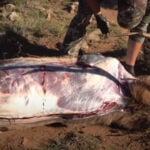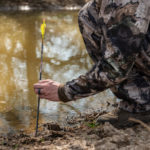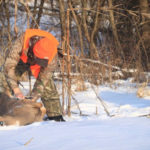My heart sunk as my arrow disappeared behind the broadside buck’s last rib. Not only had I rushed the shot, but my bowstring slapped my coat sleeve, too. I wasn’t proud of my shot, nor would it yield a quick kill. As a responsible hunter, my error crushed my spirits. I wished I hadn’t even gotten the opportunity.
But, the reality of what had just happened set in, and my brother who’d been sitting with me and I discussed it. We both agreed that the shot would kill the buck and that he probably hadn’t gone very far. Mortality, however, would take at least a few hours. Even though we were teenagers at the time, we knew we had to tip-toe out and return the following morning. Sleep eluded me that night, and I could only pray that God would guide our steps to the nice North Dakota buck come morning.
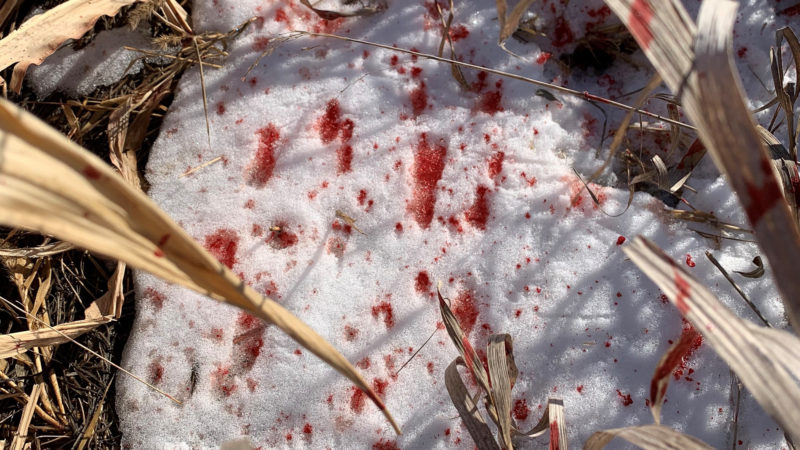
We rose that following morning and located the arrow, then made a plan. We’d last seen the buck entering into a long shelter belt, so a friend went to the opposite end just in case, and my brother and I began walking the shelter belt in the direction my buck had gone. We’d walked 150 yards from the point of impact when we found my buck. Because we backed out the evening prior, we found him easily. Had we followed the trail right after the hit, we no doubt would’ve jumped the buck and faced a perplexing recovery situation.
The moments following a marginal shot are very critical. Smoking an animal and watching it collapse within sight is the perfect end to a hunt, but there are many variables in bowhunting that can cause a less ideal outcome like the one I mentioned above. And when that happens, the age-old advice, “When in doubt, back out,” is worth gold. It can spell the difference between recovering an animal or pushing it to parts unknown and losing the trail entirely.
It All Begins With the Hit
When you arrow an animal, don’t holler or make any other type of humanly commotion. The animal already has an adrenaline surge from sprinting, and alarming it further with unnecessary shouting or celebrating is foolish. Hold your cool and don’t celebrate until you retrieve the animal. Don’t needlessly lengthen the blood trail by alarming the animal as it runs away.
Now, the phrase in my title refers to the doubt that looms following a shot fired. Perhaps you were unable to visually follow your arrow flight, or maybe the angle at which the animal was standing deceived you. For these or other reasons, the animal didn’t fall within view, and you’re left with some level of doubt. Usually, tip-toeing out of the area as quietly as possible is the best next move.
If you’re able to watch the animal run away for at least 200 yards, then it’s typically OK to inspect the shot scene and attempt to retrieve your arrow for assessment (on pass-through shots). Do it discretely and tactically, taking great care not to disrupt the area or a possible blood trail.
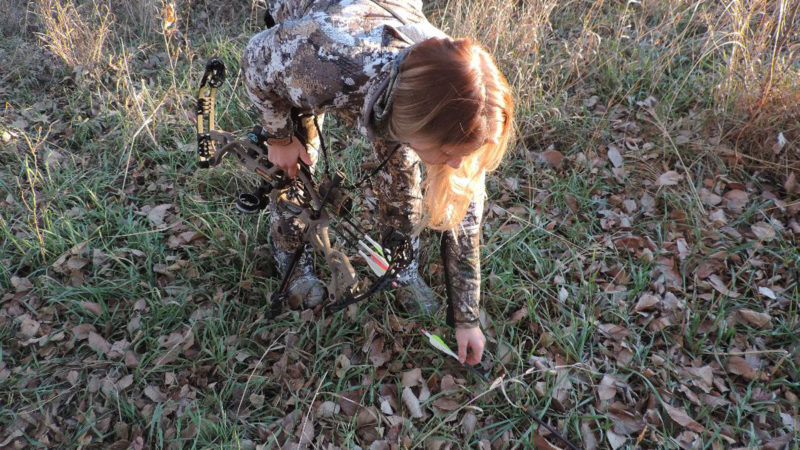
Recently, I shot a 10-pointer through the heart, and while it appeared my arrow hit right where I was aiming, the arrow appeared to be too far back as the buck ran away. I knew 100 percent that it was a killing hit, but I questioned if it hit exactly where I’d aimed or not. I watched the buck disappear into cattails 80-some yards away, and with howling winds, I heard nothing after he disappeared. Since I had a small level of doubt, I waited for 3 1/2 hours to trail the deer.
On arrival at the scene, I realized as soon as I saw the blood trail that waiting hadn’t been necessary. It had indeed been a perfect heart shot, and the deer had fallen just after it had disappeared. Had I trailed the buck immediately, he’d have been dead by the time I reached him. As it was, I was out nothing by waiting. I played it safe, and if my hit had been sub-par, waiting would’ve been crucial to recovery in the thick cattail jungle.
Sometimes, you’ll have to decide to back out after seeing the blood trail. If your shot looked good but you find gut matter or dark red blood, you can usually determine that your shot wasn’t perfect and that the animal will need time to expire. Always treat every situation individually.
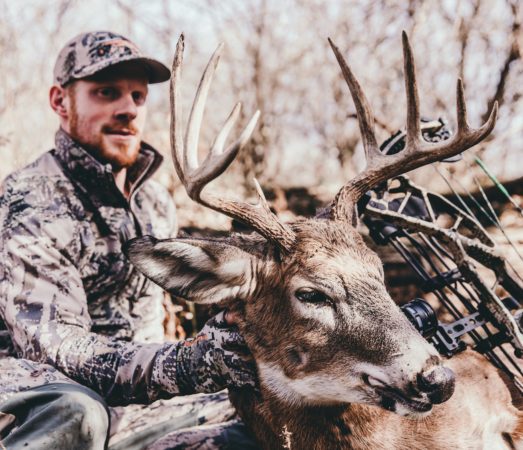
Rain
Rain almost always complicates recovery on marginal hits. If you make a marginal hit when it’s going to rain, often, backing out is still best. Many gut-shot deer will travel 150-200 yards and bed down. Typically, they’ll die in that bed after 5-8 hours if not disrupted or pushed. Gut shots notoriously yield difficult tracking. In this case, have confidence that your shot will kill the animal, but don’t track too soon. If you jump a deer, adrenaline can take them great distances, and the more twists and turns they make through the timber, the more perplexing the trail becomes, especially in the rain.
Now, if you have zero doubt in your shot and saw that it was a bonafide double-lung hit, I’d suggest trailing while it’s easy rather than risking a washed-away blood trail.
Exceptions to the Rule
There are specific situations in which forsaking the adage is forgivable. In open country where you have hundreds of yards of visibility, following up a marginal hit right away can be best. If the animal beds or assumes a position that allows a follow-up stalk that will put you in bow range, by all means, try to get in there and administer a finishing arrow. Stalking is so much more challenging in the timber, especially in the thick stuff, but in the open country, you have the visual advantage and can monitor the animal and move in when possible.
Another time to excuse the rule is when you determine that your hit was non-lethal. In this case, keeping the animal moving will help with blood loss, thus giving you a trail to follow. And, since you know that your first hit won’t kill the animal regardless of how long you wait, you must do everything in your ability to pursue that animal until you either lose the trail or finish the job with a lethal hit.
Heat is another consideration when trailing game. If it’s so hot that you’ll risk spoiled meat, consider trailing after a minimal waiting period. Rather than wait 6 hours to trail a gut shot deer, consider following after 3 to 4 hours. Move slowly and constantly scan your surroundings for the animal. It’s likely a follow-up shot will be needed. Make it count and do a fast recovery. Do everything possible to avoid meat spoilage.
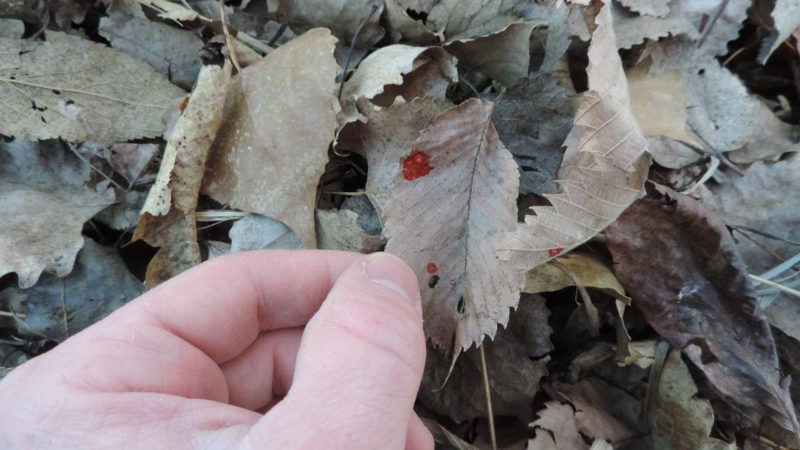
Reflections
If you bowhunt over a long period of time, eventually, you’ll face a perplexing blood trail or simply make a poor hit. It happens to even the most experienced bowhunters. When it does, the decisions you make immediately following your hit are critical to recovery. If you make the foolish mistake of following a gut- or liver-hit animal within an hour, it could cost you that animal. However, if you wait 4-8 hours, your odds of recovery are so much higher.
Do your part to make quality shots on game, but also do your part to recover the animal. If it means waiting for 5 hours to track, then wait. If it means stalking in for another shot before the animal gets too close to a property line, make it happen. Assess each situation individually and make wise decisions so that you can recover the game you hit.

 By
By 
